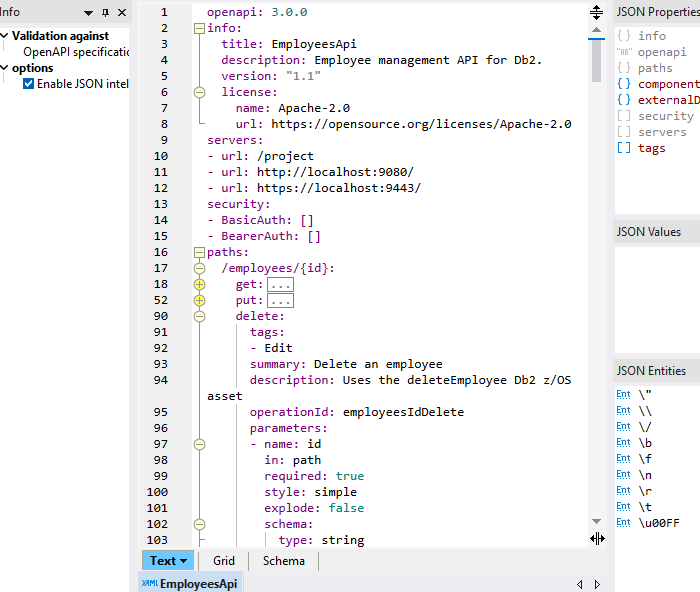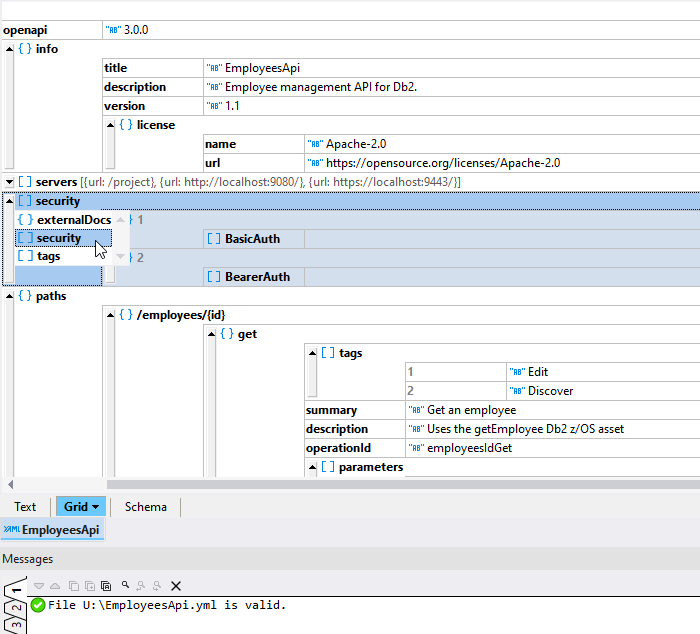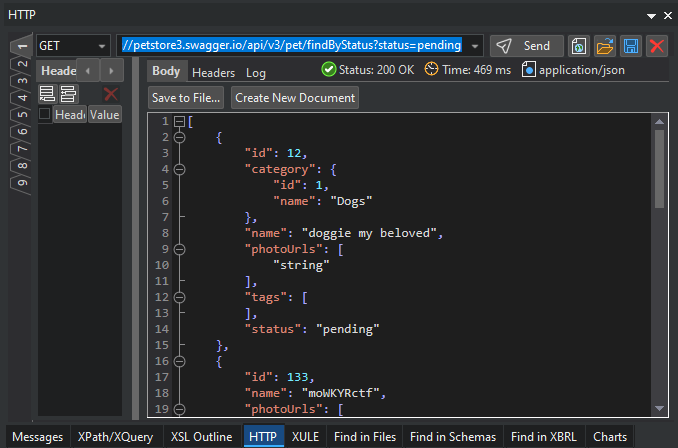OpenAPI Tools for Developers
In the fast-paced world of modern application development, APIs are the glue that connects systems, services, and devices. REST APIs, in particular, are widely used for their simplicity, scalability, and flexibility. But as APIs grow in complexity and scale, managing them effectively becomes a challenge. That’s where the OpenAPI Specification (OAS) comes in.
OpenAPI offers a standardized way to describe RESTful APIs in a machine- and human-readable format. This not only enhances collaboration among development teams but also streamlines the entire API lifecycle, from design to documentation, integration, and testing. And with powerful tools like Altova XMLSpy and Altova MapForce, working with OpenAPI becomes faster, more visual, and far more efficient.

What is OpenAPI?
The OpenAPI Specification, formerly known as the Swagger spec, is a widely adopted standard for describing REST APIs. It allows developers to define endpoints, request parameters, response formats, authentication methods, and more in a structured JSON or YAML document. As a result, the OAS makes it easier to discover how an existing API works.
A typical OpenAPI document includes information like:
- Human-readable descriptions and metadata
- Available endpoints (e.g., /users, /products) and the available operations (GET, POST, PUT, DELETE) for each
- Input and output schemas (JSON or YAML)
- Authentication mechanisms (e.g., OAuth2, API keys)
- Server URLs and environments
In this way, the OpenAPI document can be used as a blueprint to:
- Generate API documentation
- Validate API requests and responses
- Create client SDKs and server stubs automatically
- Guide discovery, development, and testing
OpenAPI has become an integral part of API-first development. The OAS provides a consistent, language-agnostic way to define RESTful APIs—making them easier to understand, maintain, and integrate across teams, tools, and platforms.
In keeping with its support for standards-based technologies, Altova has added comprehensive support for working with OpenAPI in its developer and data integration tools.
OpenAPI Editor
XMLSpy provides numerous tools for working with structured data technologies like XML, JSON, and YAML, and also includes built-in support for OpenAPI.
The graphical JSON Schema Editor in XMLSpy supports validating and editing JSON Schemas based on the OAS. The visual interface is an effective tool for developers to work with complex OpenAPI schemas. The graphical representation of the structure makes it easier to understand while making it easier identify errors or inconsistencies. The JSON Schema editor includes support for OAS extensions including discriminator, xml, format, and external docs.
XMLSpy also supports creating and editing OpenAPI documents in both text view and grid view. For YAML- or JSON-based OpenAPI documents, support includes:
- Syntax-coloring and source folding for easier reading and editing
- Schema-based validation against the detected OAS version to catch structural and content errors
- Content completion and helper windows to guide you through the spec

Working with an OpenAPI document in Grid View adds another layer of clarity, making it easy to review the structure and details of the OpenAPI specification at a glance. In addition to intelligent YAML and JSON editing tools, grid view offers in-cell commands and drop-down menus, visual drag and drop editing, and table view for rearranging the way nodes are displayed. You can also expand and collapse sections of the data to navigate through long files and locate specific elements.

Whether you’re hand-coding your OpenAPI file or editing one generated by another tool, XMLSpy gives you complete control over the structure and format, while reducing human error through intelligent editing features.
Creating & Testing OpenAPI HTTP Requests
When it’s time to explore a third-party interface or test your own specification, the HTTP Testing window in XMLSpy lets you send real API requests and view the responses directly within the application. This feature is especially useful for testing endpoints during development or debugging issues after deployment.
With the HTTP Testing window, you can:
- Set request headers and authentication options
- Send GET, POST, PUT, DELETE, and other HTTP methods
- Inspect full request/response details, including headers and status codes
This eliminates the need for separate API testing tools, keeping everything in one convenient interface.
To get started, simply specify the location of the OpenAPI document, and the HTTP testing window displays the available paths with their corresponding operations. Based on the operation and parameters you select, XMLSpy autogenerates the test message, which you can send to the API, and then view the results.

OpenAPI Data Integration
While XMLSpy is great for designing and testing APIs, MapForce shines when it comes to integrating OpenAPI-defined interfaces with other data sources. As part of its support for any-to-any data mapping, MapForce supports calls to REST web services for processing data in ETL or data integration workflows. Built-in support for OAS in MapForce removes much of the manual work of setting up a web services call.
When you specify the OpenAPI file that describes the web service you require, MapForce automatically processes the structure of the call and displays it as a graphical data mapping component.

Now you’re ready to connect web services inputs or map outputs to any of the other formats supported by MapForce (XML, databases, PDF, NoSQL, CSV, Shopify, etc.) and add data processing rules or transformations.
Whether you’re integrating cloud-based APIs into your backend database or transforming data from an internal API into XML for a partner, MapForce provides a powerful way to automate and scale these tasks.
Get Started
As the demand for API-first architecture grows, so does the importance of tools that help you work effectively with the OpenAPI specification.
XMLSpy and MapForce are available separately or as part of the value-priced MissionKit, which is available for a free, 30-day trial.

Leave a Reply
Want to join the discussion?Feel free to contribute!